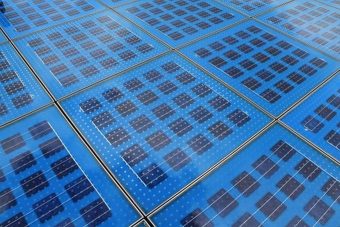
Waste and resources specialist Veolia has set out plans to install solar across its portfolio of former UK landfills, in order to “better utilise” the sites to generate income from renewable electricity.
As part of its restoration programme to clean up former landfill sites that have reached the end of their operation, Veolia has enlisted the help of green energy specialists REG Power Management and solar PV installers Ethical Power to explore the potential for turning a number of its UK sites into solar farms.
Veolia said last week it has already secured planning permission to install solar panels across three UK sites at Netley in Hampshire, Ling Hall in Warwickshire and Ockendon in Essex.
Once at full capacity, these three sites will be capable of generating more than 70MW of power to the National Grid, or enough to power around 185,000 average homes per year, the company said.
Both the Netley and Ling Hall sites are earmarked for the installation of 12MW of solar power capacity each, while the much larger Ockendon site has planning permission for around 46MW of solar capacity.
Estelle Brachlianoff, Veolia UK and Ireland’s senior executive vice-president, said the Netley landfill site in particular was a “primary example” of landfill green energy generation, as a 5MW solar farm has already been installed at the site with enough power to meet the needs of around 13,000 homes per year.
“This came online in spring 2017 and following the success of this site we’re working with our partners to extend the capacity at Netley up to twelve megawatts, while rolling out this project across other landfill sites, including Ling Hall near Rugby and Ockendon in Essex,” explained Brachlianoff.
Other Veolia landfill sites which have been reviewed for solar power suitability include the Pitsea and Rainham landfills in Essex, the Wapseys Wood site in Buckinghamshire, the Albion site in Leicestershire “as well as several others located throughout Hampshire and the West Midlands”, according to the firm.
Stuart Whiteford, investment director at Ethical Power said there is considerable potential to use former waste landfill sites for solar generation. “Currently landfill occupies 2,000 hectares in the UK, which is potentially 800MW of solar generation, and of course does not include other brownfield sites, such as industrial and contaminated land,” he explained.
The project is being run alongside work to improve the biodiversity across “numerous” landfill sites, Veolia said, such as creating habitats for water voles, birds and flowers as well as planting wildflower meadows and trees to help provide shelter for animals and offset CO2.
Matt Partridge, development director at REG Power Management, said the solar power landfill vision had been four years in the making. “This will contribute to both of our aspirations related to landfill after-care management, climate change and the circular economy,” he said of the project.
Source: businessgreen.com



